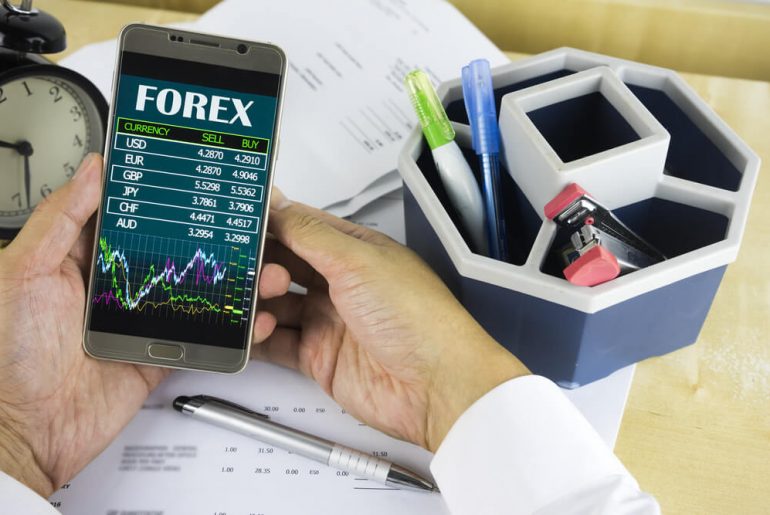Embarking on an exciting journey into the captivating world of forex trading, the concept of lots emerges as a pivotal guide for newcomers. Lots aren’t just numbers; they’re the architects of trade volumes, the guardians of risk, and the architects of your trading fate. Within these virtual boundaries, we invite you to unravel the mystery of lots—a concept that shapes positions, defines potential, and holds the key to mastering risk. Get ready to explore the labyrinth of lot classifications, the precision of calculations, the wonders of lot size calculators, the magic of capital requirements, and much more. Let’s delve into the depths where numbers blend with strategy, paving the way to enlightened forex expertise.
In the dynamic and captivating realm of forex trading, a single term wields the power to shape trade volumes, risk management, and profit potential – the elusive “lot.” Picture it as the cornerstone of a trader’s toolkit, a standardized unit that ignites a symphony of market moves. We’re about to peel back the layers, dig into the depths, and uncover the fascinating world of forex lots.
Unveiling Lot Types
The standard lot size, representing 100,000 units of the base currency, takes center stage. For example, buying one standard lot of the EUR/USD pair means acquiring 100,000 euros. However, considering the diverse financial situations of traders, different lot sizes come into play:
1. Mini Lots (10,000 base currency units): Imagine a scaled-down rendition of the standard lot. It’s like a “mini-me” version designed specifically for traders who may not have an abundance of resources at their disposal. These mini lots open the door for participation in the forex world without requiring a hefty investment.
2. Micro Lots (1,000 base currency units): Picture an even smaller denomination than the mini lot. Micro lots are the perfect fit for those with tighter budgets. They allow you to dip your toes into trading waters gently, taking smaller steps towards engagement in the market.
3. Nano Lots (100 base currency units): If you’re all about cautious steps and risk management, then nano lots are your go-to. These are like the smallest puzzle pieces of the trading world, crafted for those who prefer a minimalistic approach to risk. Ideal for beginners and those who prefer to tread lightly in the market.
These diverse lot sizes empower traders to tailor their positions based on account balances and risk tolerance, facilitating an optimal risk-reward ratio.

Crunching the Numbers: Calculating Lot Sizes
Lot sizes dictate the value of each pip movement in a currency pair. In standard lot trades, a single pip shift equals $10 (for currency pairs with the US dollar as the quote currency). In comparison, mini and micro lot trades offer pip values of $1 and $0.10, respectively. Thus, the choice of lot size necessitates a meticulous evaluation of risk tolerance and account size.
The Art of Calculation
Determining lot sizes involves a systematic process that combines three key elements: your account size, desired risk percentage, and chosen stop loss level. This structured approach entails:
- Assessing account size, representing the available trading capital.
- Defining the acceptable risk percentage, usually limited to 1-2% of the account balance per trade.
- Identifying the stop loss level, denoting the price point for exiting a trade if it moves unfavorably.
Leveraging these components, the following formula unveils the optimal lot size:
Lot size = (Account Size * Risk Percentage) / (Stop Loss in Pips * Pip Value)
Let’s take an example: If you have a $10,000 account size, are willing to risk 1% of your capital, and set a 50-pip stop loss, the calculated lot size would be 0.2. This means you would be trading with 0.2 standard lots or 20 mini lots.
Leveraging Technology: Forex Lot Size Calculators
Forex lot size calculators are essential tools that simplify the process of determining lot sizes. These calculators automate the calculation by taking into account your account balance, risk percentage, and stop loss level. This automation not only saves time but also ensures accurate position sizing, making decision-making more efficient and reliable.

Crunching the Numbers: Capital Requirements for Trading 1 Lot
To grasp the financial aspects of trading one lot, it’s crucial to understand margin requirements and leverage. Leverage allows you to control larger positions using borrowed funds, while margin represents the collateral required to open a trade. These two factors work together to determine the capital needed for a single lot trade.
Dance of Variables
Two key factors define capital requirements for a one-lot trade:
- Currency Pair Influence: The chosen currency pair dictates margin requirements, with each pair characterized by distinct volatility and price movements. These factors impact the capital required for a one-lot trade.
- Leverage Ratio: The leverage ratio determines how much borrowed money you can use for trading. Higher leverage ratios mean you need less capital for a one-lot trade, but this also increases the risk involved.
Consider two scenarios to grasp this interplay:
- EUR/USD Trade: Opting for a 50:1 leverage and a 2% margin requirement, trading one standard lot (100,000 euros) at an exchange rate of 1.1 requires a $2,200 margin (2% of $110,000).
- **True Forex Funds:** With a leverage ratio of 1:100, a $10,000 trading account will allow you to control a position worth $1,000,000. This can be achieved by paying a fee of $89.

Risk Management and Lot Size
Effective risk management is crucial in the forex market due to its inherent volatility. By implementing sound risk management strategies, traders can navigate the uncertainties of the market while safeguarding their capital and maintaining a steady path toward profitability. These strategies not only protect traders from substantial losses but also contribute to maintaining emotional stability and long-term success in their trading journey.
Lot Sizes: Guardians of Risk Management
Lot sizes play a pivotal role in risk management, acting as arbiters of potential profits or losses per trade. By using smaller lot sizes like micro and mini lots, traders can allocate their capital more precisely and diversify their risk across multiple trades. This approach helps mitigate the impact of any single trade on their overall account balance. On the other hand, larger lot sizes offer potential for higher profits and losses but also come with increased market risk.

For beginners, starting with smaller lot sizes and gradually increasing them as their trading capital and confidence grow is a prudent strategy. Forex lots, whether standard, mini, micro, or nano, offer traders the flexibility to tailor their positions to their account size and risk tolerance. Mastering the concept of lot sizes in conjunction with effective risk management is a key factor in becoming a successful forex trader. As traders navigate the world of different lot sizes, they gain confidence and skills that pave the road to profits in the forex market.





